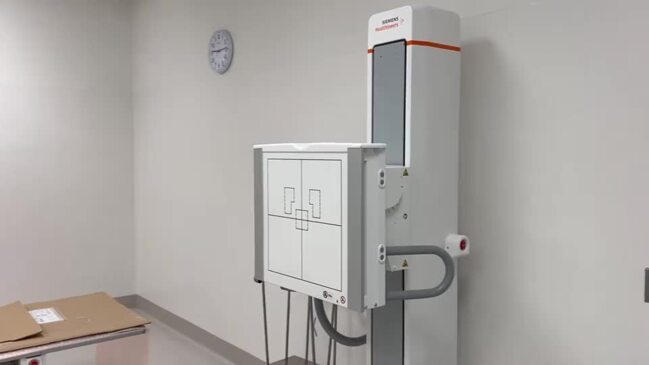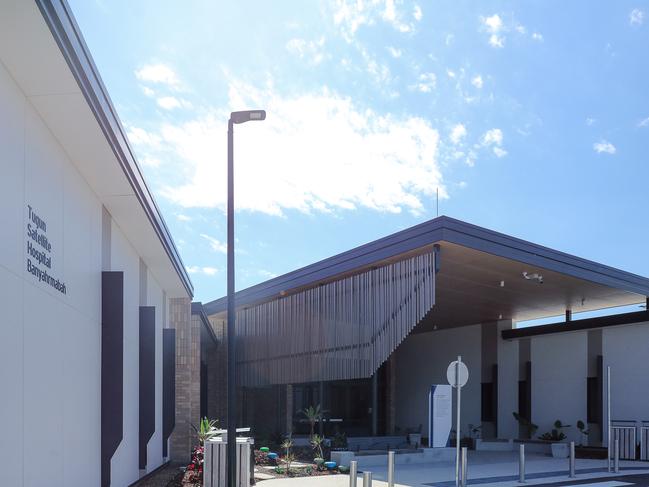Qld satellite hospitals attracting more seriously ill patients
More than 1500 people with ‘imminently life-threatening ailments’ have turned up to Queensland’s six satellite hospitals in three months this year, sparking calls for a major education drive.

QLD News
Don't miss out on the headlines from QLD News. Followed categories will be added to My News.
More and more Queenslanders are mistakenly turning up to the state’s satellite hospitals in urgent need of lifesaving care, sparking calls for a major education drive.
The latest Queensland Health data has revealed 1578 patients suffering “imminently life-threatening ailments” turned up to six satellite hospitals in the state’s southeast across April, May and June.
It’s the equivalent of 17 people a day seeking urgent care at facilities that specialise in minor injuries and illness instead of heading straight to an emergency department.
The vast majority had category 2 ailments, while a total of 24 over three months were category 1.
Category 1 and 2 ailments are defined as imminently life-threatening, with patients meant to be seen within two and 10 minutes of arriving at hospital respectively.
Queensland Health data shows category 1 patients turning up at satellite hospitals were spending between 20 minutes and 85 minutes altogether at satellite hospitals for treatment. Category 2 patients were spending between an hour and two hours overall.
The Australian Medical Association of Queensland warned the term “satellite hospital” was causing confusion, calling again for them to be renamed.

AMAQ president Nick Yim again reiterated calls for a major education drive to inform Queenslanders of where they should head – a GP clinic, urgent care clinic, satellite hospital or the emergency department – ahead of new walk-in nurse-led clinics opening in October.
“Having seriously ill people present at a healthcare setting that is not equipped to handle a life-threatening emergency is dangerous for patients and distressing for staff,” Dr Yim said.
But Health Minister Shannon Fentiman argued it was less of a case of mistaken identity and more about people misjudging how sick they were.
She cited the case of two people, in the first three months of the year, who turned up to the Ripley Satellite Hospital unaware they were indeed having a stroke. The two patients were then transported to the nearby Ipswich Hospital.
“Sometimes people are not aware of just how sick they are, but they’re getting care right when they need it, and then they’re transported safely,” she said.
“We know that about 150 patients a week are transported by an ambulance from GP clinics to hospitals.
“I think Queenslanders are beginning to understand where they go in terms of a minor injury or illness, or whether it’s an emergency.”

Patients requiring urgent lifesaving care are about 4.4 per cent of all people who seek help at satellite hospitals as at the end of June, an increase from 3.8 per cent in the first three months of 2024. This is despite the state government pumping $1.35m into promoting and educating the community about the facilities.
Opposition health spokeswoman Ros Bates said the figures showed why the LNP had chosen to rename the facilities should it take government in October.
“These figures show why the LNP will rename these facilities and properly resource them,” she said.
“Lives are on the line, and if this saves even one life it will have been worth it.”
Dr Yim said it was time to consider renaming satellite hospitals and promoting what they could and couldn’t offer.
“People have the reasonable expectation that if something is called a hospital, it has doctors, an emergency department and overnight beds,” he said.
“But satellite hospitals may not have any of these, and this is clearly causing confusion for our community.”
It comes as the latest health data also revealed more Queenslanders than ever are in the queue for elective surgery amid a population explosion.

But patients are also spending less time waiting to get on the operating table, and the number of people waiting longer than recommended has been slashed in half after peaking due to Covid disruptions.
A total of 61,421 people are now on the elective surgery waiting list as of the end of June.
This even though the health system treated more elective surgery patients in the June quarter than ever before, undertaking a whopping 37,682 surgeries.
The latest health data shows 94 per cent of people classed as ready for surgery are now seen within the recommended time frames, an improvement from June 2022 when the figure was 85 per cent.
Queenslanders waiting longer than they should for surgery skyrocketed during Covid-19 amid deferrals and cancellations, with the long waiting list growing to a staggering 6053 people by June 2023.
This has since been cut in half, to 3053 patients.
At Wide Bay Hospital and Health Service the long waiting list has gone from 191 patients to zero in 12 months according to the government.

Ms Fentiman heralded the latest figures as a “success story”, as Opposition Leader David Crisafulli seized on the size of the waiting list as the “worst ever recorded in the state’s history”.
“The median wait time for elective surgery has come down by a number of days,” Ms Fentiman said.
“So yes, the list is getting bigger but despite that demand more Queenslanders are getting seen within those recommended time frames.”
Mr Crisafulli took aim at the government amid the release of the data, saying it had failed to reduce the elective surgery wait list and called for accountability.
He said under a government led by him Queenslanders could expect ambulance ramping to get better and the elective surgery waiting list to be reduced.
“There’ll be a couple of things that I intend to be held accountable for; one is a number of beds to be delivered, but also a commitment to make sure that Queenslanders know that ambulance ramping will be reduced year on year, and so too will the elective surgery waiting list,” he said.
“There’s no ifs, buts or maybes on that, that will occur.”

Originally published as Qld satellite hospitals attracting more seriously ill patients




